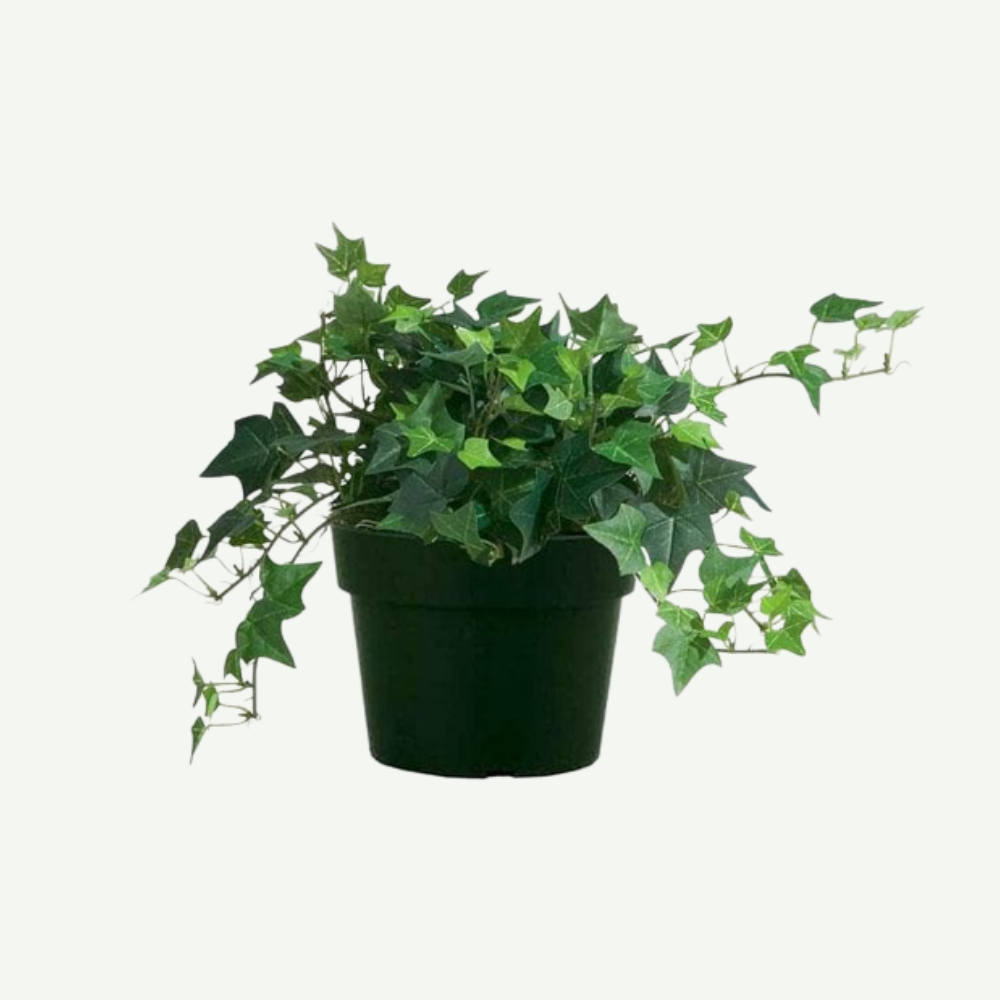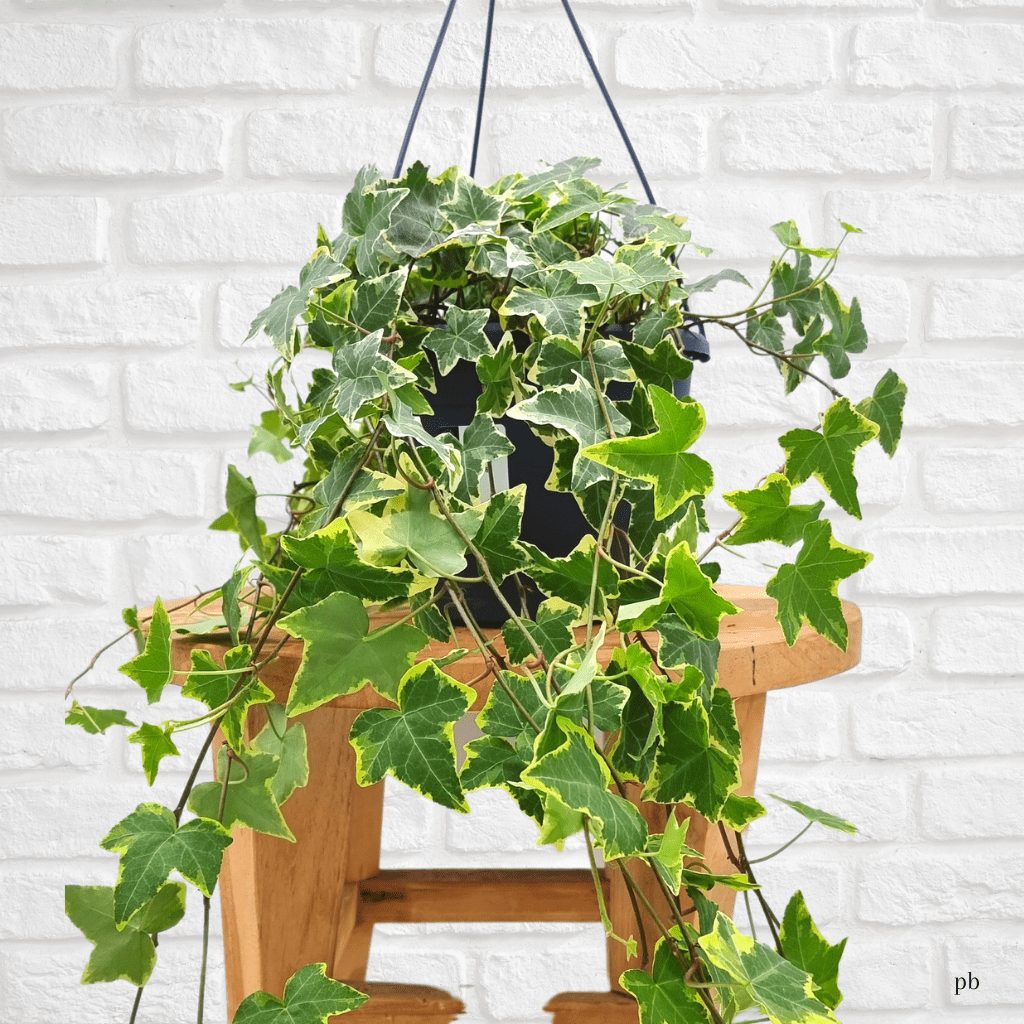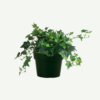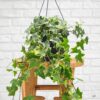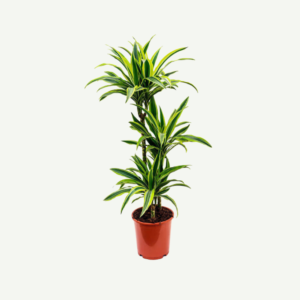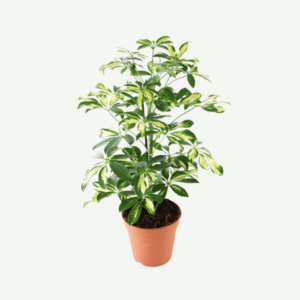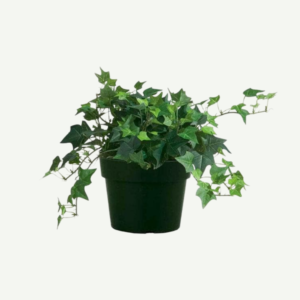Hedera helix, commonly known as English Ivy, is a genus of evergreen climbing or trailing plants from the Araliaceae family. Native to various regions around the world, including Europe, Asia, and North America, ivy is a versatile and popular choice for both indoor and outdoor gardening. It is highly valued for its attractive foliage, vigorous growth, and ability to add a touch of greenery and elegance to various settings.
Care of Hedera helix:
Light: Hedera helix prefers bright, indirect light when grown indoors. It can tolerate lower light conditions but may have reduced growth and less vibrant foliage color. When grown outdoors, ivy appreciates partial shade to dappled sunlight.
Temperature: Hedera helix is adaptable to a wide range of temperatures. Indoor temperatures between 50°F to 75°F (10°C to 24°C) are generally suitable. Outdoor ivy is hardy in zones 5 to 11, depending on the species.
Watering: Keep the soil consistently moist but not waterlogged. hedera helix prefers slightly moist soil and benefits from regular watering. Let the top inch of the soil dry out between waterings. During the winter months, reduce watering frequency to prevent overwatering.
Humidity: Hedera helix plants are tolerant of average indoor humidity levels, but they will appreciate higher humidity. Regular misting or placing a humidity tray nearby can be beneficial.
Soil: A well-draining and fertile potting mix is suitable for indoor hedera helix. Outdoors, ivy is relatively adaptable to various soil types.
Fertilization: Fertilize indoor ivy every 4-6 weeks during the growing season (spring and summer) with a balanced, diluted liquid fertilizer.
Characteristics of Hedera helix:
Leaves: Ivy plants have glossy, dark green leaves with a characteristic three-lobed or five-lobed shape, depending on the species and variety. The leaves are often arranged alternately along the stems and may have various patterns or variegations, such as white, cream, or yellow markings.
Growth Habit: Hedera species exhibit various growth habits, including climbing or trailing vines, bushy mounds, or ground covers. Climbing ivies have aerial roots that allow them to cling to various surfaces, such as walls, fences, and trees.
Flowers and Fruits: Ivy plants produce small, inconspicuous flowers in late summer or early autumn, typically followed by clusters of berries. The berries are usually black or dark purple and can be toxic if ingested, so it’s essential to keep them out of reach of pets and children.
Toxicity :Some species of ivy can be toxic if ingested, so caution should be exercised if growing ivy in homes with pets or small children.
Landscape Use of Hedera helix:
Ivy is commonly grown as an indoor houseplant, where it can be trained to climb up trellises or allowed to trail from hanging baskets.
It is also popular for outdoor landscaping, where it can be used as a ground cover, as a climbing vine on walls or fences, or to provide a lush backdrop to gardens.
Cautions:
Ivy can be invasive in some regions, so it’s essential to check local regulations before planting it in outdoor landscapes.
Overall, Hedera (Ivy) is a versatile and low-maintenance plant that adds a touch of natural beauty to both indoor and outdoor settings. With its attractive foliage and ability to adapt to different growing conditions, ivy remains a popular choice among gardeners and plant enthusiasts worldwide.
